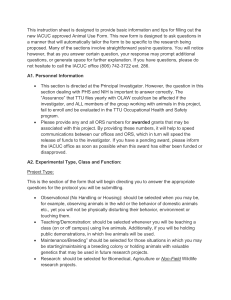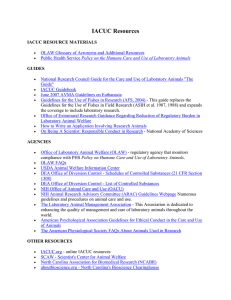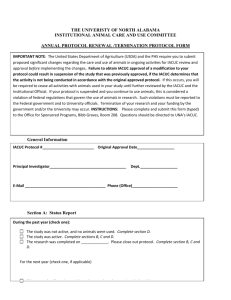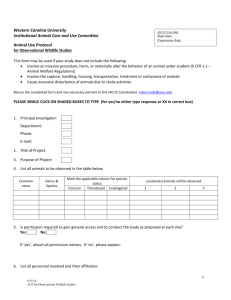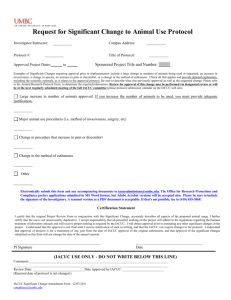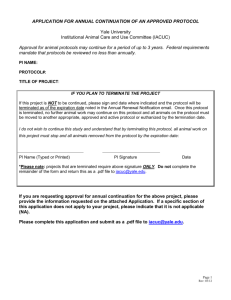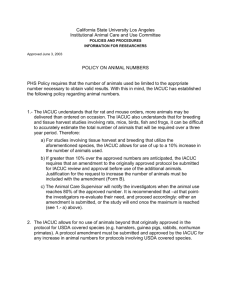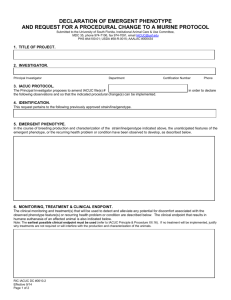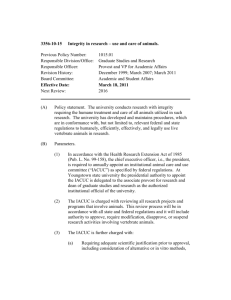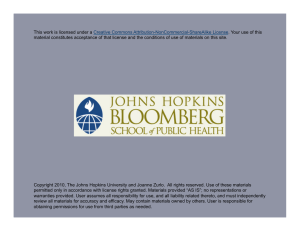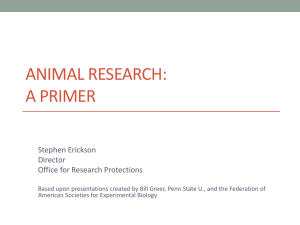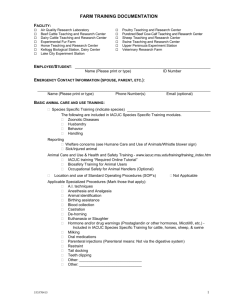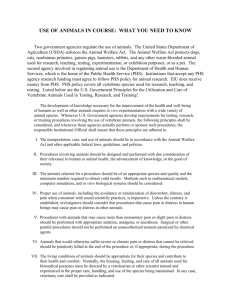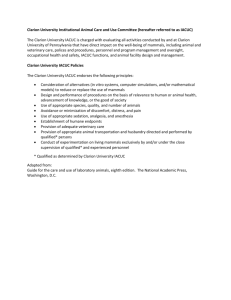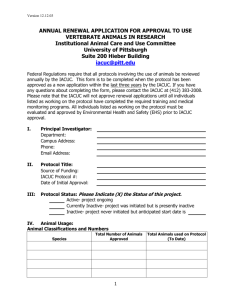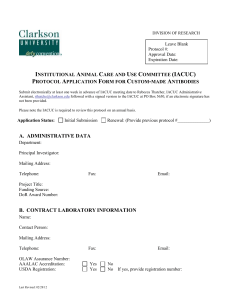Monitoring Phenotypes in Genetically Modified Mice
advertisement
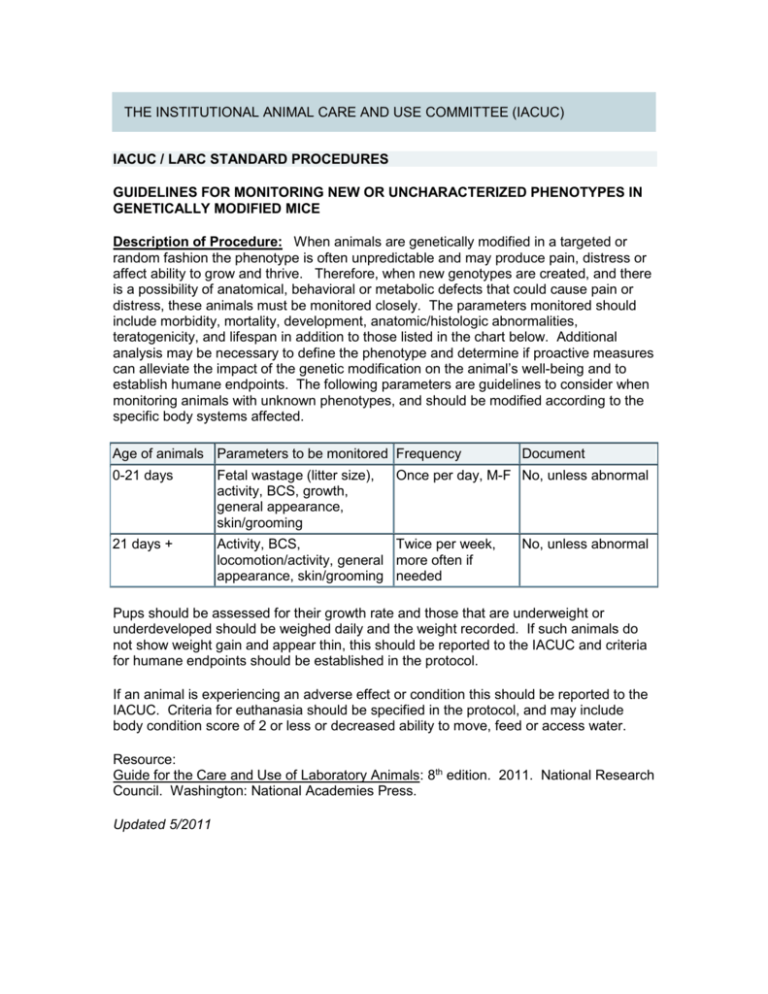
THE INSTITUTIONAL ANIMAL CARE AND USE COMMITTEE (IACUC) IACUC / LARC STANDARD PROCEDURES GUIDELINES FOR MONITORING NEW OR UNCHARACTERIZED PHENOTYPES IN GENETICALLY MODIFIED MICE Description of Procedure: When animals are genetically modified in a targeted or random fashion the phenotype is often unpredictable and may produce pain, distress or affect ability to grow and thrive. Therefore, when new genotypes are created, and there is a possibility of anatomical, behavioral or metabolic defects that could cause pain or distress, these animals must be monitored closely. The parameters monitored should include morbidity, mortality, development, anatomic/histologic abnormalities, teratogenicity, and lifespan in addition to those listed in the chart below. Additional analysis may be necessary to define the phenotype and determine if proactive measures can alleviate the impact of the genetic modification on the animal’s well-being and to establish humane endpoints. The following parameters are guidelines to consider when monitoring animals with unknown phenotypes, and should be modified according to the specific body systems affected. Age of animals Parameters to be monitored Frequency 0-21 days Fetal wastage (litter size), activity, BCS, growth, general appearance, skin/grooming 21 days + Activity, BCS, Twice per week, locomotion/activity, general more often if appearance, skin/grooming needed Document Once per day, M-F No, unless abnormal No, unless abnormal Pups should be assessed for their growth rate and those that are underweight or underdeveloped should be weighed daily and the weight recorded. If such animals do not show weight gain and appear thin, this should be reported to the IACUC and criteria for humane endpoints should be established in the protocol. If an animal is experiencing an adverse effect or condition this should be reported to the IACUC. Criteria for euthanasia should be specified in the protocol, and may include body condition score of 2 or less or decreased ability to move, feed or access water. Resource: Guide for the Care and Use of Laboratory Animals: 8th edition. 2011. National Research Council. Washington: National Academies Press. Updated 5/2011


